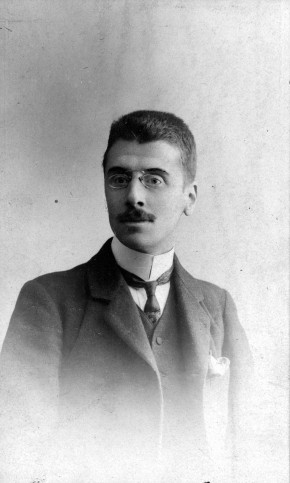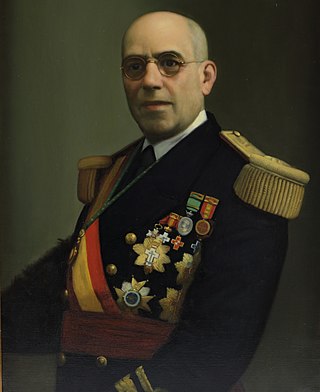
Auyán-tepui, also spelled Ayan, is a tepui in Bolívar state, Venezuela. It is the most visited and one of the largest tepuis in the Guiana Highlands, with a summit area of 666.9 km2 (257.5 sq mi) and an estimated slope area of 715 km2 (276 sq mi).

Francisco Ayala García-Duarte was a Spanish writer, the last representative of the Generation of '27.

Almodóvar del Campo is a municipality of Spain, located in the province of Ciudad Real, autonomous community of Castilla–La Mancha. Featuring a total area of 1.208,25 km2, it is the largest municipality in the region and one of the largest municipalities in Spain. As of 1 January 2020, it had a population of 5,983.
Antonio Alatorre Vergara was a Mexican writer, philologist and translator, famous due to his influential academic essays about Spanish literature, and because of his book Los 1001 años de la lengua española.

Ignacio Bolívar y Urrutia was a Spanish naturalist and entomologist, and one of the founding fathers of Spanish entomology. He helped found the Real Sociedad Española de Historia Natural in 1871, and was the author of several books and of over 1000 species.

Jorge Mañach y Robato was a Cuban writer and attorney, considered among the most distinguished of his time.

The National Museum of Natural Sciences is a natural history museum in Madrid, Spain. Dependent on the Ministry of Science, it is one of the National Museums of Spain, and it is managed by the Spanish National Research Council (CSIC).

Fernando Altamirano was a Mexican physician, botanist and naturalist. He was born in Aculco, studied in Querétaro, and died in Mexico City. Altamirano was the founder and the director of the Instituto Medico Nacional from 1888 to 1908.
Antonio Domínguez Ortiz was a Spanish historian, one of the leading specialists in the history of the Spanish Antiguo Régimen of the 16th through 18th centuries, in particular in social history. He was also expert historian of Andalusia, with a particular emphasis on the history of the Moriscos.

Julián Juderías y Loyot was a Spanish historian, sociologist, literary critic, journalist, translator and interpreter.

Julio Rey Pastor was a Spanish mathematician and historian of science.

Julio Ernesto Rubio Barrios is a Mexican researcher and administrator at Monterrey Institute of Technology and Higher Education.

Marta Macho Stadler is a Basque mathematician, expert in scientific divulgation. She teaches undergraduate courses on geometry and topology at the University of the Basque Country UPV/EHU and her research area is the Geometric Theory of Foliations and Noncommutative Geometry. She is editor in chief of the digital blog Mujeres con Ciencia of the Scientific Culture Chair UPV/EHU and has been awarded several prizes, among others the Emakunde Equality Prize 2006.
Jerónimo Cortés was a Spanish mathematician, astronomer, naturalist and Valencian compiler.

Juan Avilés Farré was a Spanish historian and professor at the Spanish National University of Distance Education.
Jenara Vicenta Arnal Yarza, was the first woman to hold a Ph.D. in chemistry in Spain. She was noted for her work in electrochemistry and her research into the formation of fluorine from potassium biflouride. In later years, she was recognized for her contribution to the pedagogy of teaching science on the elementary and secondary levels, with a focus on the practical uses of chemistry in daily life. She was awarded a national honor, the Orden Civil de Alfonso X el Sabio.

Wenceslao Benitez Inglott OAX was a distinguished Spanish navy officer, scientist, and engineer.

José Macpherson y Hemas (1839–1902) was a Spanish amateur geologist, noted as pioneer in the introduction of modern techniques for the studies of rocks in Spain.

Miguel Colmeiro y Penido was a Spanish botanist, and member of the Spanish Royal Academy of Sciences.
Ludolfo Paramio Rodrigo was a Spanish journalist, politician, and sociologist.














